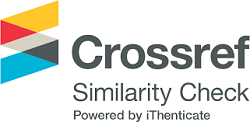Performance Analysis of a SWIPT Enabled UAV-Assisted Relaying
Abstract
In the recent era, unmanned aerial vehicle (UAV) plays an important role in numerous application fields related to the wireless communication system. Due to its precise control, efficient deployment, and affordable cost, UAV-assisted communication attracts significant attention to all the sectors including the defense sector, agriculture sector, and security purpose, and so on. Though UAVassisted relaying has enormous advantages but there are potential challenges while UAV deploys as a relay. For example, deploying UAV in the wireless communication field, its battery life is the main concern due to its limited battery size and storage capacity. To get significant benefits from UAV while deployed in the cooperative communication network, the battery status of the UAV is an unavoidable issue. To minimize the aforementioned problem, energy harvesting (EH) techniques can be an efficient solution. The UAV can harvest energy from the transmitted power by the source and with the help of this harvested energy UAV can retransmit the signal to the destination. However, there are several parameters that also significantly influence the UAV-based cooperative system performance such as UAV’s position, time allocation factor and power allocation factor, and UAV’s height. Considering the importance of the aforementioned parameters, in this paper, we have considered simultaneous wireless information and power transfer (SWIPT) enabled UAV-assisted relaying network and evaluate the system outage performance with different parameters aspects. We have provided some insight about the parameters such as the UAV’s position, the power allocation factor and the time allocation factor and the UAV’s height by providing simulation results such as the outage probability versus transmit power in the different urban scenario, the outage probability versus time allocation factor and power allocation factor and the outage probability versus UAV’s height. These simulation results clearly show the significance of the abovementioned parameters in wireless-powered UAVassisted cooperative communication.
This is an Open Access article distributed under the terms of the Creative Commons Attribution License (http://creativecommons.org/licenses/by/4.0/), which permits unrestricted use, distribution, and reproduction in any medium provided the original work is properly cited.
Keywords
Full Text:
PDFTime cited: 4
DOI: http://dx.doi.org/10.25073/jaec.202151.310
Refbacks
- There are currently no refbacks.
Copyright (c) 2021 Journal of Advanced Engineering and Computation

This work is licensed under a Creative Commons Attribution 4.0 International License.










